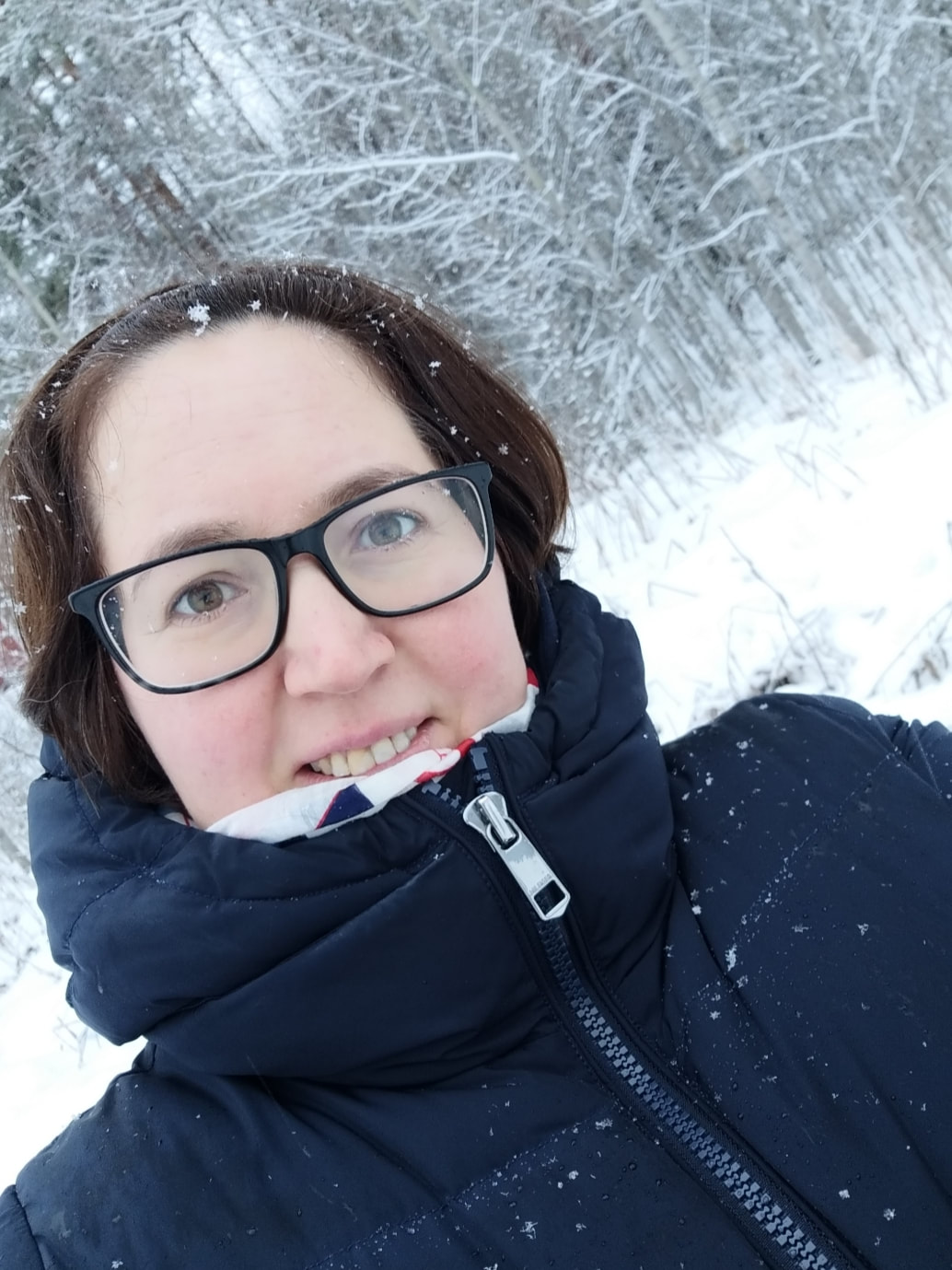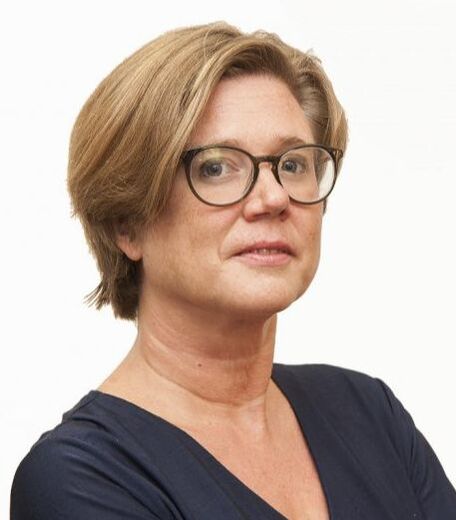ASSAY: A JOURNAL OF NONFICTION STUDIES
6.2
6.2
|
The Emmy-winning HBO drama Chernobyl (2019) has renewed global interest in one of the most dramatic, and certainly telegenic, human-made catastrophes of the twentieth century. Produced 33 years after the initial explosion at the Chernobyl nuclear power plant near Prypiat, Ukraine [1] on 26 April 1986, the five-part series depicts the conditions in which the disaster occurred and the various measures undertaken by Soviet Party members, scientists, and workers to respond to the crisis. By focusing on two central characters—Valery Legasov, a member of the Soviet Academy of Scientists appointed to investigate the accident, and Ulyana Khomyuk, a fictional Belorussian nuclear physicist whose role is based on the team of scientists who aided Legasov—the series presents the aftermath of the disaster as a veritable race against time engaged in by morally upstanding experts whose efforts are repeatedly stymied by corrupt and scientifically uninformed Soviet officials.
In response to the success of the HBO serial—as well as subsequent debates about its introduction of fictional components—the Russian television channel NTV announced plans to produce its own depiction of the Chernobyl disaster. As Adam Bankhurst states in a recent issue of ING, this Russian version, which will be financed by the Russian Ministry of Culture, is projected to be a 12-episode series that charts the unfolding of events immediately before and after the explosion, from April to December of 1986. Notably, it will emphasize the long-standing interest demonstrated by Western intelligence officers in the daily operations of the plant in the years preceding its collapse. Specifically, according to a 30 May 2019 report by RBC-Ukraine, the series will focus on two characters based on historical personages: Albert Lenz, a CIA officer assigned to gather intelligence on the Chernobyl plant, and Andrey Nikolayev, a KGB Lieutenant Colonel of Military Counterintelligence, who suspects that Lenz is meddling in the plant’s operation and attempts to thwart an imminent catastrophe. The series’ director, Aleksey Muradov, has stated that this production will offer “a hypothesis about American interference in the Chernobyl nuclear power plant’s functioning, which resulted in its explosion” (Vgolos, 8 June 2019) Given the present geopolitical climate in which the two series have been produced, it is not entirely surprising that they should offer such startlingly different renditions of the same event. Indeed, their mutual efforts to wrest control over the narrative of an historical trauma places into relief the extent to which Cold War-era tensions not only have reemerged within chilly relations between Russia and the West, but also spilled over into forms of mass entertainment. And yet, just as Cold War-era popular artifacts produced on either side of the proverbial Iron Curtain revealed a curious symmetry [2], so too do these two series share an uncannily similar plot structure: one in which daring individuals attempt to take down a formidable adversary. As journalist Masha Gessen argues in a searing review published in the 4 June 2019 issue of The New Yorker, the HBO series fails to “accurately portray Soviet relations of power” by featuring noble heroes who draw on their expert knowledge to expose complacent apparatchiks and negligent engineers. This, Gessen maintains, is the stuff of “Hollywood fantasy,” not least because it subscribes to the “great-men (and one woman) narrative of history, where it’s a few steps, a few decisions, made by a few men that matter, rather than the mess that humans make and from which they suffer.” Although it is too soon to judge how the rivaling Russian series might portray Soviet relations of power, it is already evident that its proposed cat-and-mouse conflict between a KGB officer and a CIA agent repeats, rather than challenges, Hollywood tropes. In the end, Gessen laments that the HBO series will surely install itself into the popular imaginary—an insight the NTV producers seem to share by planning a rival serial—even as global audiences continue to overlook more nuanced written accounts of the Chernobyl disaster. Here, she gestures not only to the Belorussian Nobel Prize recipient Svetlana Alexievich’s 1997 oral history of the event—translated in English under the alternate titles Voices From Chernobyl or Chernobyl Prayer—but also to accounts produced by Western scholars and journalists. Indeed, Gessen singles out Harvard historian Serhii Plokhy ‘s Chernobyl: The History of a Nuclear Catastrophe (2018), as a work of non-fiction that effectively dispenses with narratives of individual failures or heroics in order to argue that it was the “Soviet system itself that created Chernobyl and made the explosion inevitable.” Texts such as Plokhy’s, she suggests, bring readers closer to the “truth” of the disaster than any made-for-TV “disaster movie” ever could. Even so, precisely because these works of non-fiction do the slow, plodding, but ultimately necessary work of exposing the systemic causes and consequences of the Chernobyl crisis, they will surely be eclipsed by televised thrillers produced by HBO—or, for that matter, NTV. The purpose of this essay is to demonstrate how three recent works of non-fiction authored by Western journalists and scholars—Adam Higginbotham’s Midnight in Chernobyl (2019), Plokhy’s Chernobyl: The History of a Nuclear Catastrophe (2018), and Kate Brown’s Manual For Survival: A Chernobyl Guide to the Future (2019)—resist “great man” modes of historiography in order to expose the underlying structural causes and consequences of the Chernobyl disaster. Insofar as they do so, these texts also posit Chernobyl as an event—a literal and figurative historical flashpoint—that was at once an effect of the Cold War and a cause of its conclusion. And yet, although the three studies uphold the central thesis that the massive and unwieldy “Soviet system itself” was largely responsible for the Chernobyl event and in turn the unravelling of the Cold War, they nevertheless arrive at this conclusion through discrete narratives and notably different methodologies. Journalist Higginbotham’s largely omniscient and chronological account of the catastrophe focuses primarily on the consequences of post-1970’s era Soviet “gigantomania” and the subsequent influences of Western “hard” and “soft” diplomacy in mitigating the disaster; Ukrainian-American scholar Plokhy’s history of the event, explicitly framed by the perspective of a [post-] Soviet emigré, calls attention to how “eco-nationalist” movements that emerged within the post-Chernobyl Soviet Union contributed to its implosion; and environmental historian Kate Brown’s own narrative places into relief her immediate position as an American scholar-traveler in order to expose the relationship between a socio-geographically localized event and Cold War-era nuclear policies that at once were contained by and transgressed geo-political borders. Read together, these three Western works of non-fiction offer a prismatic image of Chernobyl’s spatio-temporal role in the proceedings of and ultimate conclusion to the Cold War. Moreover, and just as crucially, these texts also progressively unsettle overdetermined, triumphalist Western narratives of the Cold War that dwell exclusively on the failures of Soviet nuclear ventures and thus posit the USSR as the West’s “nuclear Other.” Significantly, these three texts, once read according to the narrative we have constructed, comprise an increasingly urgent critique of what anthropologist Hugh Gusterson calls discourses of the “Nuclear Other.” In an essay published in 1999—in the immediate wake of the first Gulf War and in the very year that India and Pakistan heightened their respective nuclear weapons plans—Gusterson calls attention to the Orientalist discourses that informed the West’s alarmist responses to the nuclear armament of the so-called Third World (113). In Western discourse, Gusterson argues, “nuclear weapons are represented so that ‘theirs’ [ones produced within the Global South] are a problem whereas ‘ours’ are not” (114). Such claims, he maintains, participate in a larger binary logic, initially identified by Edward Said, that: produce the Orient as the mirror image of the West: where “we” are rational and disciplined, ‘they’ are impulsive and emotional; where “we” are modern and flexible, “they” are slaves to ancient passions and routines; where “we” are honest and compassionate, “they” are treacherous and uncultivated. (114) According to this logic, Gusterson maintains, “Third World” countries’ claims to nuclear development are immediately subject to the judgment of “First World” nations that presume their own knowledge, rationality, and good will in relation to their ostensibly volatile or, as it were unsettled, global counterparts (114).
Notably, although Gusterson identifies the (former) Soviet Union, a signatory to the Non-Proliferation Treaty of 1970, as one of the developed states privileged in this developed-/ undeveloped-world binary, the three authors we examine here each suggest that, in the immediate fallout of the Chernobyl disaster, Western claims to nuclear responsibility were privileged over those of the Eurasian Soviet Union. After all, as each author suggests, the USSR, once recognized as a flawed and flailing state system, was rendered as the object of—rather than a direct participant in—international (i.e., Western) diplomatic ventures, relief efforts, and regulatory reforms. And yet, the increasingly widened global perspectives demonstrated by each of these histories of Chernobyl directly complement their respective critiques of such othering, if not orientalist, logic. If, for instance, Higginbotham’s history of the disaster largely places its responsibility squarely at the feet of a Soviet state ostensibly more lax or corrupt than its Western nuclear counterparts, Plokhy’s own study places pressure on this narrative not only by emphasizing the efficiency of Soviet mass mobilization of relief efforts but also by accentuating the direct agency of eco-nationalist activists who challenged the Soviet system from within, rather than outside, it. Brown, for her part, most emphatically contests conventional narratives that pit the “rational,” “modern,” and “honest” West against a comparatively retrograde and corrupt USSR by arguing that the very secretive and exploitative measures directed by Moscow were in fact mirrored by those undertaken in Washington, D.C. (or, for that matter, London or Paris or Bonn). Ultimately, of these three accounts, Brown’s is most committed to dismantling discourses that depend on an imagination of the Soviet Union as the West’s (or, more specifically, the US’s) “nuclear Other” by demonstrating the Cold War-era superpowers’ mutual enmeshment within a complex geo-political ecology that ultimately resists definitive or otherwise absolute truths regarding an event situated within a larger geo-historical continuum. Curiously, as our study should demonstrate, there appears to be a certain correlation between each text’s commitment to critiquing discourses of the “Nuclear Other” in their respective histories and their strategic deployments of narrative voice. That is, it may not be simply coincidental that Higginbotham’s purportedly objective account of the Chernobyl disaster, predominately offered through third-person omniscient perspective, largely subscribes to Western narratives of Soviet incompetence—or that Plokhy’s minor but nevertheless significant forays into first-person narration substantiate his critiques of those same narratives. Moreover, as we have argued above, Brown’s own remarkable destabilization of East-West binaries is predicated on her self-acknowledged position as Western scholar who is deliberately “observant” of her own perceptions and interpretations.
|
|
Inna Sukhenko is a postdoctoral researcher of UH Environmental Humanities Hub, the University of Helsinki (Finland). Her current research project is focused on researching nuclear narrative within ecocritical studies, energy humanities, environmental humanities. She defended her PhD thesis in Dnipro University (Ukraine). Her research interests lie within literary energy narrative studies, environmental humanities, energy humanities, ecocriticism, nuclear criticism, nuclear culture studies, nuclear fiction, Chernobyl fiction. She contributed to the international projects on ecocriticism and environmental literature studies. She is among the contributors of The Routledge Handbook of Ecocriticism and Environmental Communication, Ed. S. Slovic etc (2019) where researching the literary dimensions of "nuclear phobia" in the U.S. nuclear fiction within risk communication. She is teaching the courses on nuclear fiction, nuclear narrative studies. She is a member of the Association for Literary Urban Studies (Finland), HELSUS (Helsinki Institute of Sustainability Sciences, Finland), the Finnish Society for Development Research (Finland), Nordic Association for American Studies (NAAS).
|
|
Anastasia Ulanowicz is an associate professor of English at the University of Florida, where she teaches courses in children's literature, visual rhetoric, critical theory, and biblical literature. She is the author of Second-Generation Memory and Contemporary Children's Literature (Routledge, 2013) and the co-editor (with Manisha Basu) of The Aesthetics and Politics of Global Hunger (Palgrave 2017). Her current research projects address representations of Eastern Europe in Western children's literature and comics.
|


